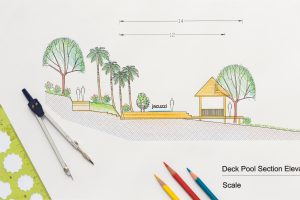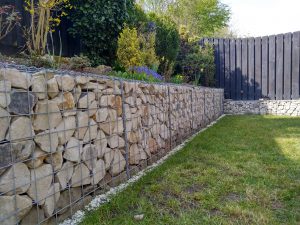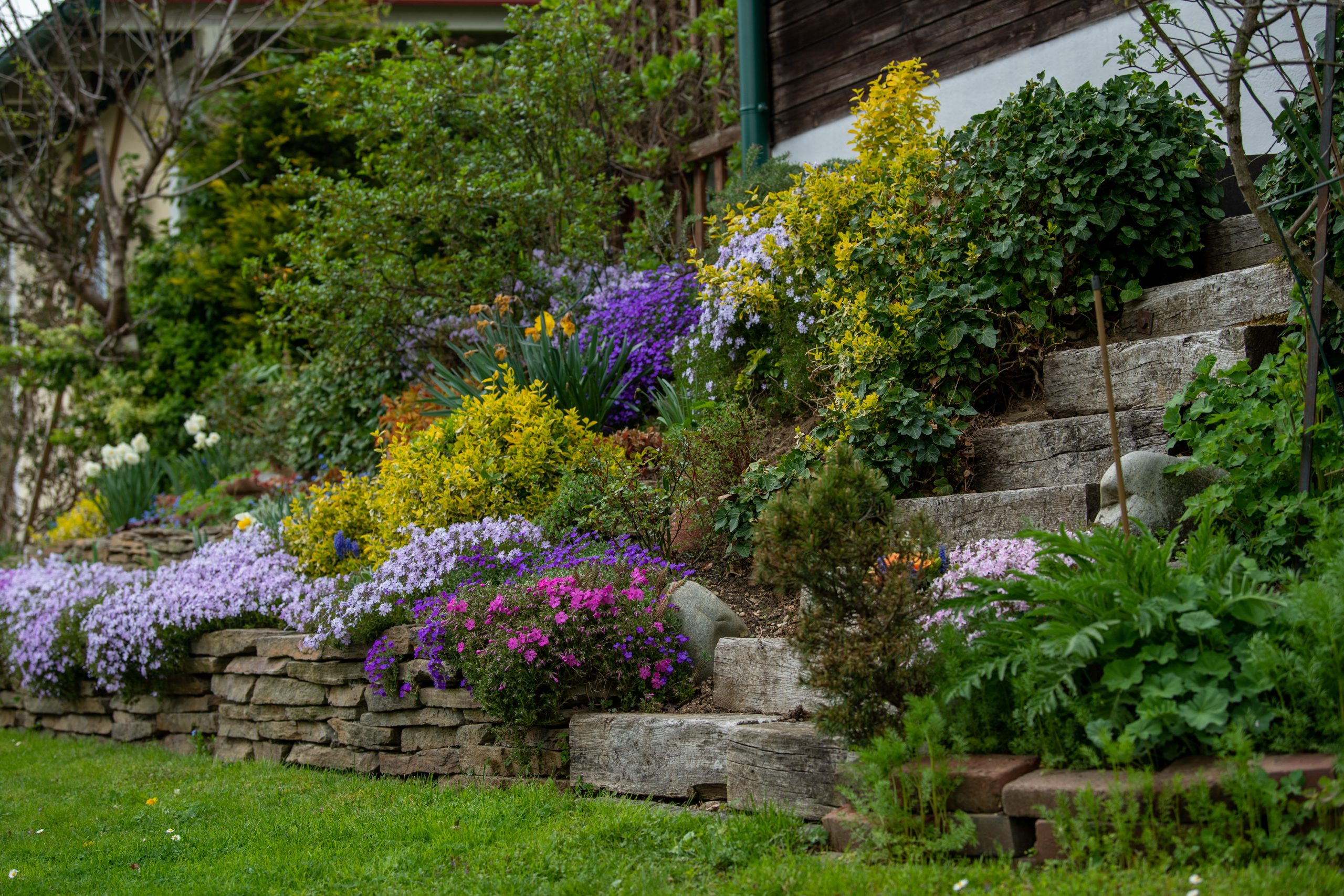Sloping gardens have put many a potential buyer off a house. A sloped or steep garden can feel daunting at first and you may wish you had a flat, open plot. Soil erosion and water runoff after heavy rain are common concerns. Not to mention the sheer practicalities of tending to – and enjoying – a sloping garden space. So, if you have a sloping garden, how do you make the most of it?
Whether your garden slopes up from your house or drops off away from it, there’s plenty you can do to make it an enjoyable space.
And, what’s more, it doesn’t need to be expensive.
In fact, a sloping garden can be an advantage and – with a bit of creativity – give you a more interesting outdoor space.
In this blog, we’ll highlight key things to consider when deciding what to do with your sloping garden. Our next post will look at planting schemes for slopes. We’ll explore which plants are likely to thrive, and which to steer clear of.
So let’s get going.
How steep is your sloping garden?
Hardly any UK gardens are one hundred per cent flat. More gardens than you imagine have a gradient. That’s part of the joy of natural spaces.
The size of your space and the severity of the slope (alongside your budget), will determine what you can do.
In an ideal world, a garden would slope gently away from your house, creating natural drainage. If this is not the case, then anything you do needs to bear drainage in mind. It’s worth researching or consulting experts on this.
Make your garden work for your family
 With the right budget and appetite for a project, you can transform any garden can into a thing of beauty. But what really matters with your garden is you.
With the right budget and appetite for a project, you can transform any garden can into a thing of beauty. But what really matters with your garden is you.
Make this the starting point.
What do you want to use the garden for? Do you want a vibrantly coloured, beautifully planted paradise with meandering paths and hideaways? Or, would you prefer the garden to feel as flat and open as possible? Is a vegetable patch a priority or do you need low maintenance?
Think about your family’s needs. If you have young children, you may want more open space for play, and it’s wise to include fences and safety features.
The internet is full of ideas, big and small, so get searching for inspiration!
Levelling a sloping garden may not be the best option
When faced with a sloping garden, often the first idea is to try and level it as much as possible. A big strong retaining wall and garden fence with a big flat surface above can be the immediate thought.
Be aware this is not only expensive but needs to be properly engineered with the correct footings to protect the stability of your house. The retaining walls are under a great deal of pressure and the weight of the whole garden is on them.
So, if your garden has more than a light slope, we recommend avoiding this option. The last thing you need is for everything to come crashing down!
Embrace the gradient in your garden with terracing
Consider terracing and zoning your sloping garden. Low terraces not only add interest and practicality to the garden, but they are also easier to create. Add shallow steps between terraces for easy access.
 There’s a whole range of materials that you can use to create shallow terraces. Many of them provide sustainable alternatives to building with new bricks or concrete blocks. For maximum climate-friendliness, source reclaimed materials.
There’s a whole range of materials that you can use to create shallow terraces. Many of them provide sustainable alternatives to building with new bricks or concrete blocks. For maximum climate-friendliness, source reclaimed materials.
Railway sleepers are popular for terraces, and with good reason. We recommend reclaimed sleepers as they’re super planet-friendly. They’re also coated in tar, making them long-lasting. However, be aware that the tar is sticky and so choose new sleepers for any walls you might like to sit on!
Other great terracing materials are reclaimed house bricks and natural stone. For something different, try Gabion cages. These are wire mesh cages filled with stones or even rubble and give a natural, modern look.
For added interest and ease, mix up the materials for your terraces. This helps create zones in the garden and you don’t need vast quantities of a single material. Railway sleepers work especially well for a vegetable plot, and natural stone walls lend themselves to a sloping rockery. If the budget is tight, try local networks for free or cheap materials and be willing to be creative!
Keep the trees and create ground cover
Trees are crucial to the stability of a sloping garden. Don’t hastily remove them. In fact, choosing native, deep-rooted trees will help the foundation of your garden. Trees also help with drainage and water absorption. Not to mention, trees provide shade and are great for the soul!
Additionally, careful planting makes the world of difference. One thing to avoid in a sloping garden is open areas of soil. You’ll find It quickly erodes. Instead, get planting straight away. To ensure your garden thrives, choose plants suitable for low terraces.
To help you with planting inspiration, our next blog looks at the best plants and planting schemes for terraces and sloping gardens.
Call in expert reinforcements
The Genesis Gardens team loves to get stuck into garden projects. For a no-obligation chat about creative, affordable and sustainable garden projects, drop us a line.
[robo-gallery id=”8689″]

